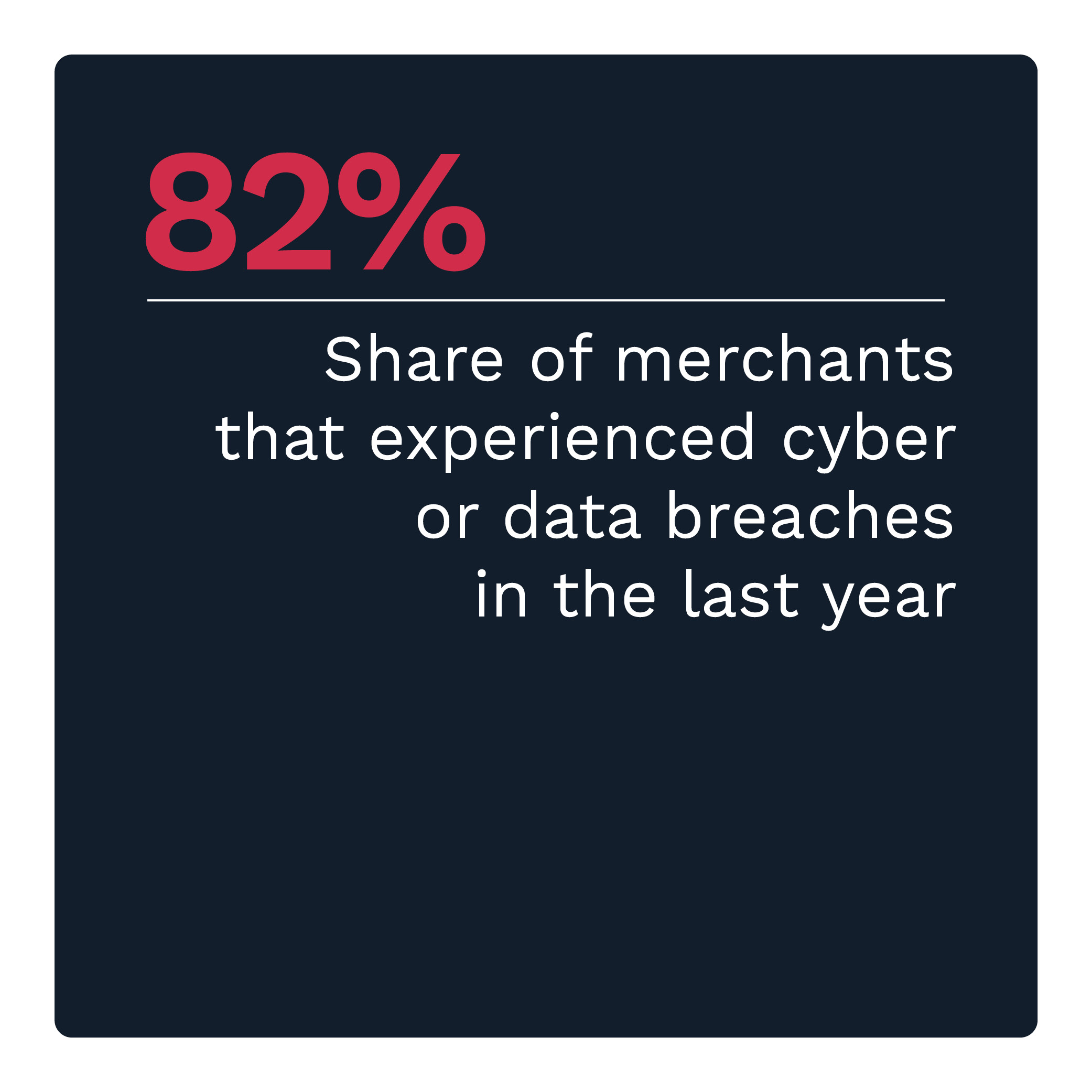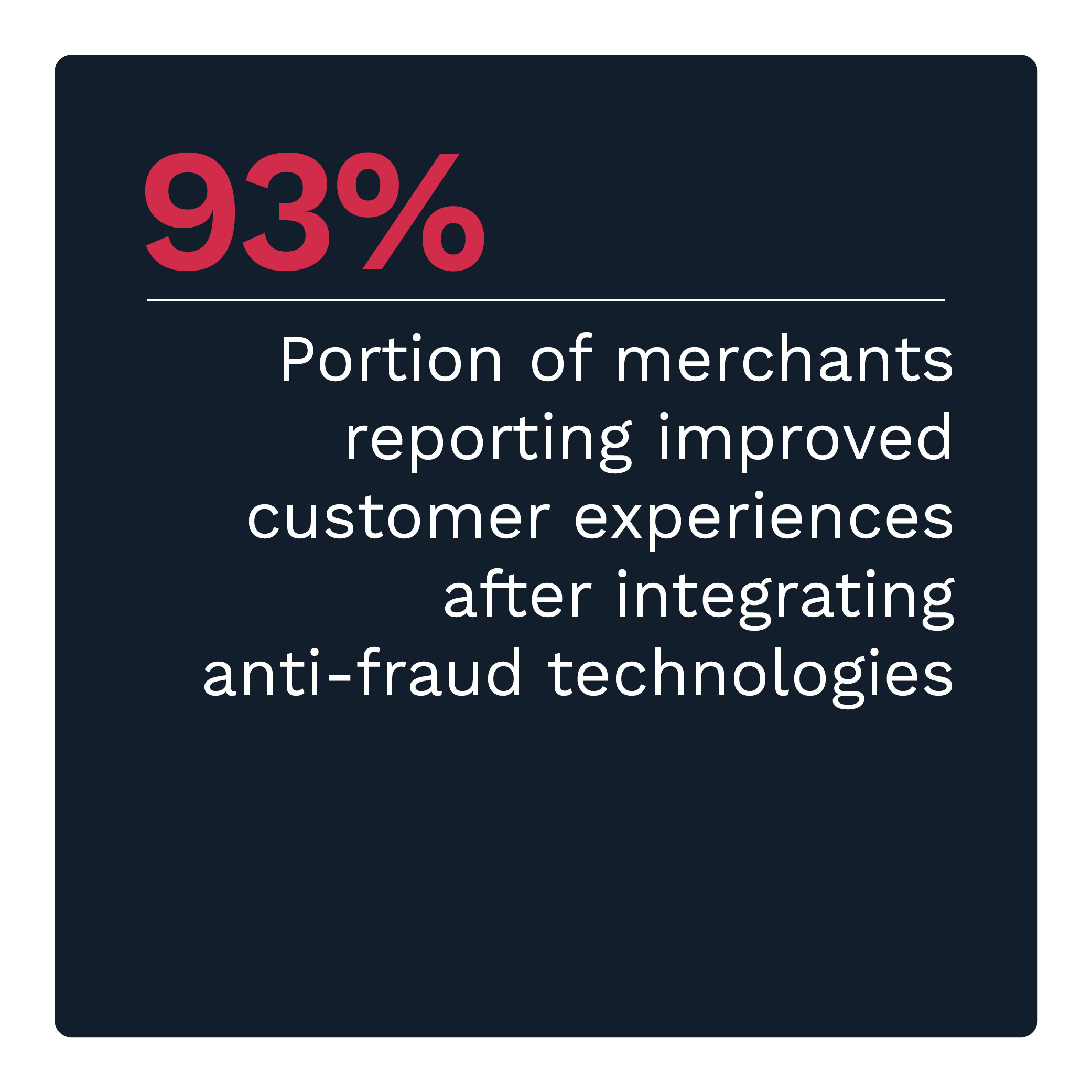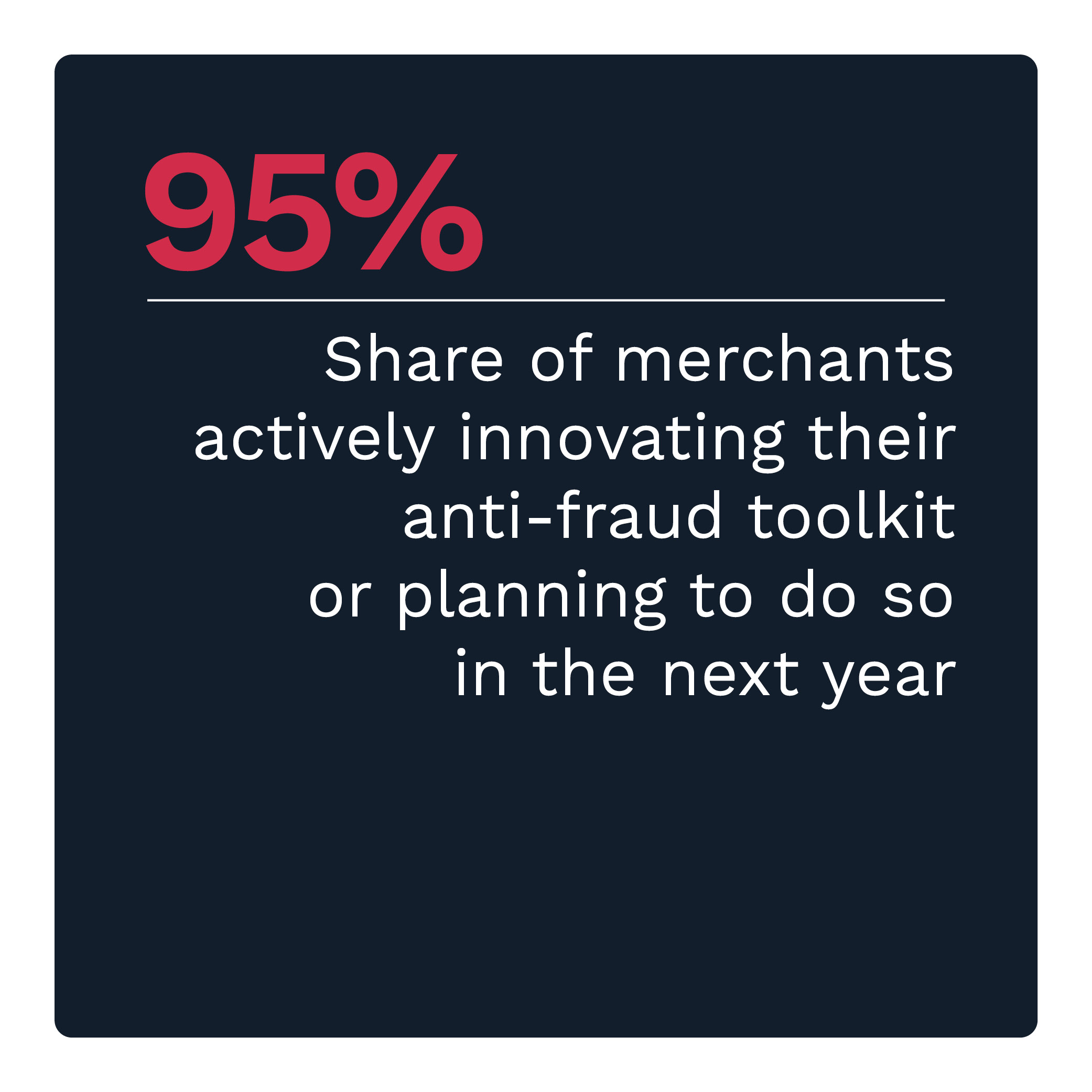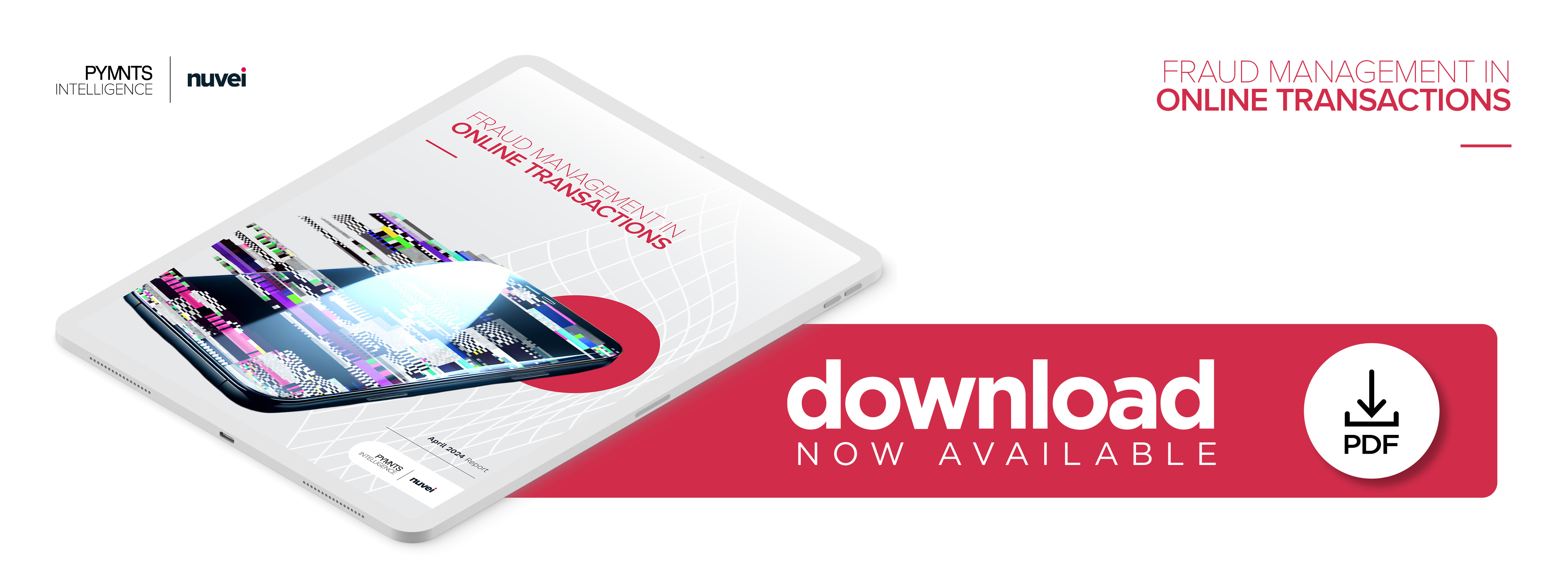Online Merchants Say Outsourcing Fraud Prevention Impacts Payments Success
For online merchants, winning the high-stakes battle against fraud and cybersecurity breaches is critical to survival. PYMNTS Intelligence finds that 82% of U.S. eCommerce players with cross-border sales faced security-related challenges in the last year. These issues also negatively impact other aspects of business, enhancing the need for fraud prevention.
As a result, 95% of merchants are actively upgrading anti-fraud toolkits or planning to do so in the next 12 months. In addition to fraud prevention, these eCommerce merchants expect the innovations will improve customer satisfaction and reduce churn.
These are just some of the insights detailed in “Fraud Management in Online Transactions,” a PYMNTS Intelligence and Nuvei collaboration. The report examines the challenges merchants face in fighting fraud and their appetite for innovative fraud prevention solutions. It draws on insights from a survey of 300 executives from eCommerce firms generating annual revenues of at least $100 million conducted from Aug. 10 to Aug. 31.
Other findings from the report include the following.
An effective fraud prevention toolkit enhances the customer experience.
Beyond the direct benefits to security and the reduced impact of fraud, nearly all merchants agreed that security innovations enhance the customer experience. Many merchants expect that innovating tools or technologies for fraud prevention will improve customer satisfaction. Eighty-two percent expect this positive result from upgrading their anti-fraud toolkit. Twenty-one percent see it as the top benefit they stand to gain.
Two-factor authentication (2FA) for each transaction is the most effective anti-fraud method.
Per-transaction 2FA, in which shoppers must authenticate each checkout, ranks as the most effective security measure of the 10 in the survey. Among the businesses that have adopted per-transaction 2FA, 43% regard it as their most effective security method. In addition, merchants using per-transaction 2FA reported the lowest failed payment among the 10 security measures.
Outsourcing fraud prevention to third-party providers can be a powerful strategy for reducing failed payments.
Forty-four percent of merchants outsource their fraud prevention operations to specialized third-party providers. Those in this group report a dramatically lower average failed payment rate of 8.5% — 32% less than the 13% rate experienced by businesses that handle their anti-fraud efforts internally.
Investing in fraud prevention innovations and partnering with specialized third-party providers can improve operational efficiency and increase customer satisfaction. Download the report to learn about eCommerce businesses’ challenges in fighting fraud and the expected benefits of adopting innovative solutions.
